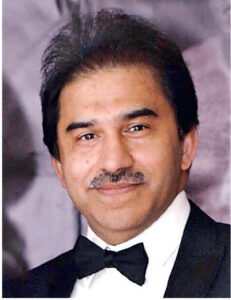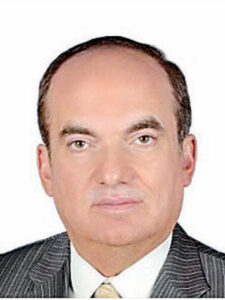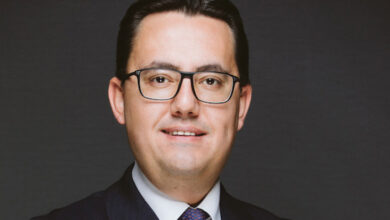Making Healthcare Facilities Available and Affordable
Operating design of a Telehealth Service Model addressing affordability & availability issues for the underprivileged population



To be able to deliver Healthcare Services over the internet is one of the biggest technological revolutions of the current era. Telehealth Services including Telemedicine have proven to have a positive impact on the healthcare delivery around the world. It is no longer a question of “if” Telemedicine helps to improve healthcare. Multi-center studies have confirmed its efficacy in several ways including maintaining healthcare quality, patient engagement and the system cost-effectiveness.
The market for telemedicine technologies is predicted to grow at a compound annual growth rate of 18.4% through the year 2020. (Forbes)
Telemedicine brings a set of benefits to improve healthcare delivery in the following ways:
- Access to care.
- Care coordination.
- quality.
- Cost-effectiveness of Healthcare expenditure.
The evolution of Telemedicine impacts three strategic focus areas:
- Improving health outcomes.
- Accelerating change in medical education.
- Enhancing physician satisfaction and practice sustainability.
Telemedicine is defined as “A system that engages one or several means of telecommunication to deliver a range of healthcare services connecting the healthcare provider (the doctor, therapist or nurse) and care recipient (the patient)”. At present, over 75% of Telemedicine is conducted over Online Live Video.
- Telemedicine technology, at present, has evolved and shaped in following three designs:
- Store-and-forward.
- Remote monitoring.
- Real-time interactive services.
Advantages of deploying Telemedicine Services
Improved Access
Minimum Physician Density for safe healthcare is to be 1 doctor for 1000 people. WHO
The Physician Density has wide international and national variables e.g.:
- India – 0.59 doctor for 1000 patients.
- UK – 2.81 doctors for 1000 patients.
Telemedicine services being able to connect doctor and patient globally over the internet, balance out the Physician Density across various countries and within a country between various cities.
Cost Efficiencies
Telemedicine to benefit people who can’t otherwise access healthcare. Forbes Cost of Healthcare Services has been shown to be reduced by deploying Telemedicine solutions:
- Better management of chronic diseases.
- Shared health professional staffing.
- Reduced travel times.
- Fewer or shorter hospital stays.
In US, the average cost of a virtual visit is $45 while attending a clinic can cost as much as $176 per visit.
Improved Quality
Help patients by allowing more Telemedicine. Forbes
Studies have consistently shown that quality of outpatient healthcare services delivered via telemedicine is as good as traditional in-person consultations.
Telemedicine offers medical consultation to patients with several benefits such as:
- Healthcare advice when they need, and where they need it.
- Medical issues can be quickly addressed through real-time urgent consultations within minutes.
- A timely diagnosis initiates prompt treatment to improve clinical outcome and reduce the subsequent cost of a delayed diagnosis.
- Remote monitoring of patients discharged from hospital enables early intervention if needed.
Healthcare delivery issues addressed by the suggested Telehealth Service model
Affordability issue: Connecting Specialist and Patient for an affordable Online Medical Consultation to extend the healthcare facilities to people in the low-income band who cannot otherwise afford Specialists’ fee or at places even can’t afford family physician’s consultation.
Distance and Reach issue: Connecting primary healthcare support via an Online Medical Consultation between a Patient and a Family Physician from main cities to smaller towns and villages for a nominal cost or even free wherever possible.
Access to quality medical care: The filtration process while selecting healthcare professionals for both specialist and family physician consultations will enable provision of highly qualified medical assistance to patients in less advantaged areas who may otherwise fall prey to quackery.
Elements of the Service Model
Peripheral Online Medical Clinic Hub: A suitably qualified nurse, trained in operating a Telemedicine Software, equipped with a webcam-laptop on the standard internet will run the Peripheral Online Medical Clinic Hub (Peripheral OMC Hub) which could be a local dispensary, primary health center, a well-established pharmacy or similar healthcare facility.
Healthcare Service Provider: A Family Physician or GP (primary healthcare advice provider) would be trained on the Telemedicine Software, to be able to provide Online Teleconsultation from home or clinic using an internet connected laptop with a webcam.
Appointments: To be made at the Peripheral OMC Hub through local advertisement using print, media and other suitable means of the campaign.
Billing: Billing will be at the Peripheral OMC Hub for offering highly discounted fee structure. In places, it can be free depending upon the level of funding available.
Prescription: The prescription will be printable at the Peripheral OMC Hub and at places will be dispensable in the same facility within a range of available medicines.
Follow-up: Repeat appointment as guided by the involved doctor will be arranged by OMC Hub Incharge through the Telemedicine Software.
Electronic Medical Records: Uploading of the available records (Documents, X-rays, Images) will be the responsibility of the Nurse In charge of the OMC Hub who will be trained in such process.
Requesting new investigations: Local Labs and Radiology facilities will be engaged for OMC Hub with a view to cost-effective solutions for the patients, thus adding further value for service.
Structure of the Management Team for the Telehealth Project
Telemedicine Software Provider Firm
- Provider of Technology.
- Maintenance of the Telemedicine Software system.
- Software Trainer and Expertise in Clinical Adaptation.
Coordinator for the Medical Professionals
- Suitable personnel with a capacity to engage relevant medical professionals.
- Ability to setup roster of the Online Medical Professionals.
- Ability to draw a backup plan if an Online Medical Professional’s short notice absence.
Coordinator for the Peripheral Online Medical Clinic Hub
- Suitable personnel with the capacity to judge and choose a Peripheral OMC Hub depending upon the population density and need.
- Ability to set up the necessary services needed at the facility.
The Project Directors
- Technical Services Coordination.
- Performance and Output Coordination.
The Account Management and Financial Audit Team
- Suitably qualified and experienced accountant to monitor and audit financial transactions and business aspect of the project.
- Expertise to draw a financial forecast and a Profit-Loss balance sheet.
- Expertise to enlist expenses, both routine and irregular expenditure.
The Project Marketing Team
- Suitably qualified and experienced marketer to use print and social media for raising awareness about the service.
- Expertise to set up local TV programs, organize road shows in the local areas etc.
The Project Correspondence Secretary
- Suitably qualified and experience Admin personnel to manage telephone calls, emails and coordinate between various teams.
Roles and Responsibilities of each Team
Project Director – Technical Services
- To choose a suitable Telemedicine Software for the service.
- To enable deployment of Software and Hardware between the doctor and peripheral hub.
- Master level Training of the Doctors involved in using the Software for an efficient service.
- Training the Trainers and Team-on-ground to handle routine software queries.
- To run regular webinars for both doctors and field workers on using the Telemedicine Software for upscaling knowledge and motivation.
- To evaluate and update the software with developing needs of the healthcare infrastructure.
Project Director – Technical Services
- To formulate Clinical Adaptation Strategy for an efficient and safe medical practice.
- Research and Development for ensuring Clinical Compliance for day to day practice
- Setting up KPIs for Medical Professionals and Para-medical staff of the project.
- To manage clinical governance issues and ensuring patient safety.
- To ensure an appropriate selection of other support teams.
Coordinator for the Medical Professionals
To manage Family Physicians and Specialists
- Locating relevant medical professionals using help of other project teams and medical organizations affiliated to the program.
- Inviting doctors through emails and managing their queries on phone calls.
- Going through CVs and setting up a database (Medical City Online Platform).
- Ensuring validity of qualifications and medical registration.
- Shortlisting and inviting doctors to Online Video Interviews (Medical City Online Platform).
- Interviewing and finalizing the selection of the Medical Professionals.
- Preparing Contractual Agreements for the doctors.
To setup Online Clinics Calendar
- Setting up Clinic Diary for the OMC Hubs.
- Getting Doctors to cover the Clinic Days.
- Ensuring a backup for each clinic.
- Providing information on whom to contact for technical troubleshooting.
- Strategize expansion of service to suitable locations.
Coordinator for the Peripheral Online Medical Clinic Hub
- To research, locate and engage a local outlet for serving as an OMC Hub to be remotely connected to the Healthcare provider.
- To locate, shortlist, interview and employ the OMC Hub Staff.
- A qualified healthcare nurse or paramedic or trained health technician.
- A receptionist with above average computer literacy for managing appointments/records.
- To train OMC Hub Staff to a master level on using Telemedicine Software on billing, printing the prescription etc
- To provide a basic introduction of the Telemedicine Software to the Medical Professionals leaving Master Skills Training for Medical City Online team
- Managing queries of the Doctors on the usage of the Software after they received Master level training from the Medical City Online team
- Acting as “Team on Ground” for the Telemedicine Software and Hardware related queries
Potential Project Enablers
Project Enablers are the organizations which can contribute or provide logistical, financial or clinical support to the Medical City Online project through their established position in the field of their expertise or business.
- Pathology Labs.
- Pharmacies.
- Private Hospitals.
- Doctor’s organizations.
- Medical Colleges in Private Sector.
The intended Outcome
The population living in less privileged areas will get access to qualified healthcare service providers discouraging the use of quackery in medical practice. The standards of healthcare are likely to improve by not only improving timely access to qualified help but by minimizing the complications occurring due to unavailability of medical advice. A detailed model of the service and its cost-effectiveness is available with the authors along with case study of its deployment and performance.
















